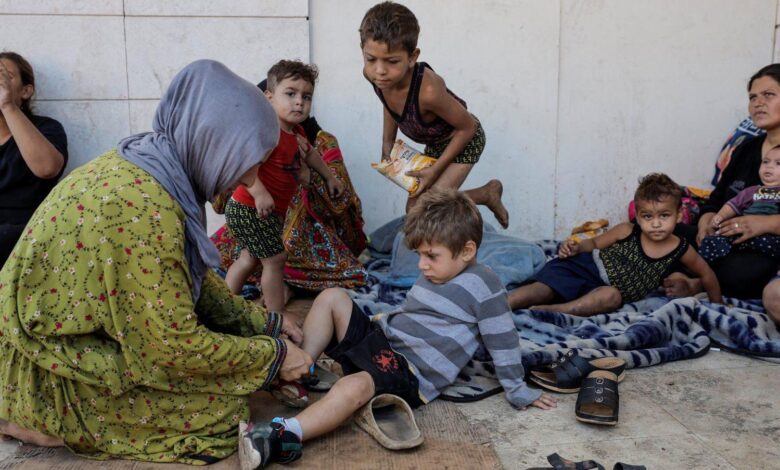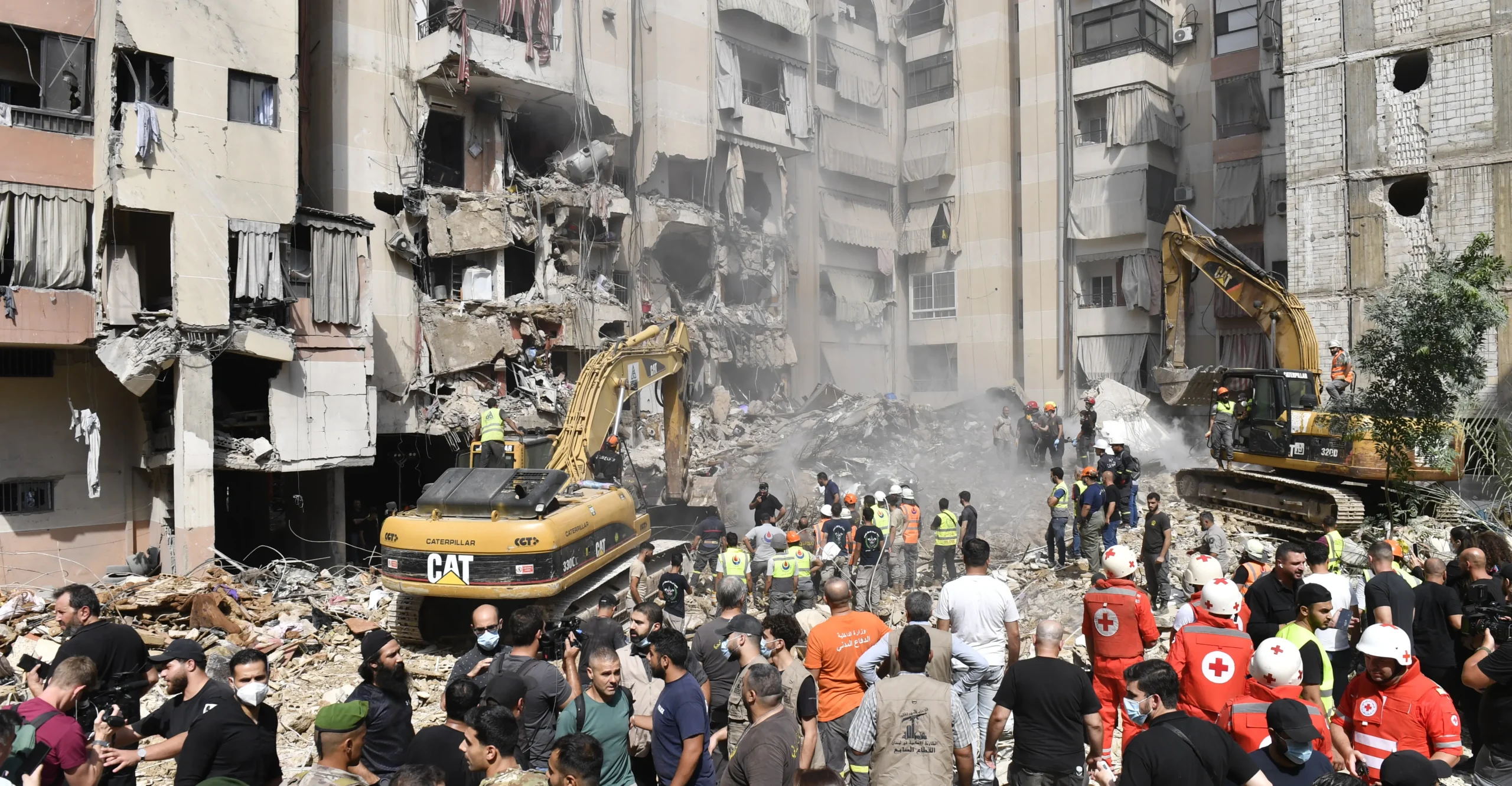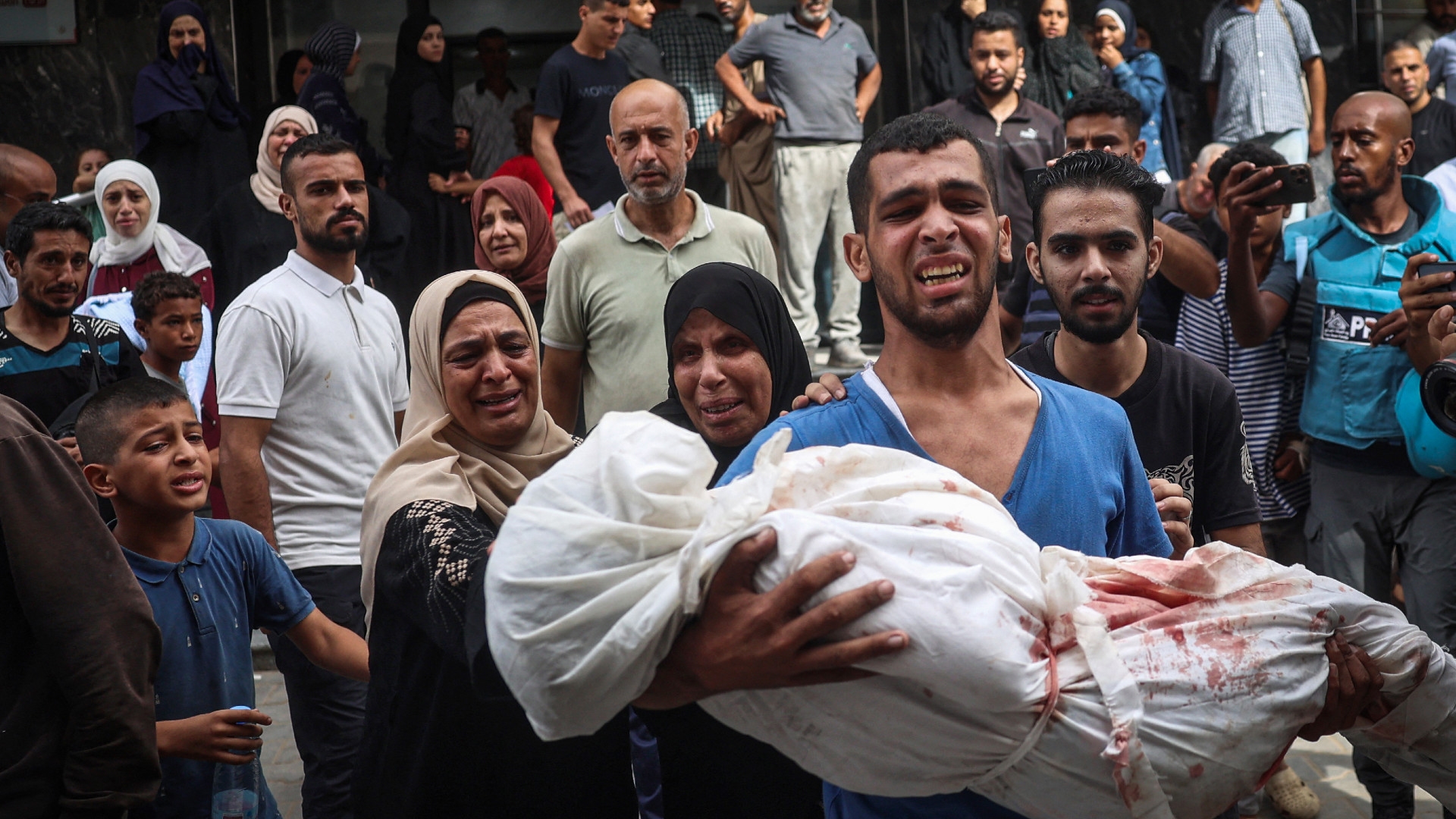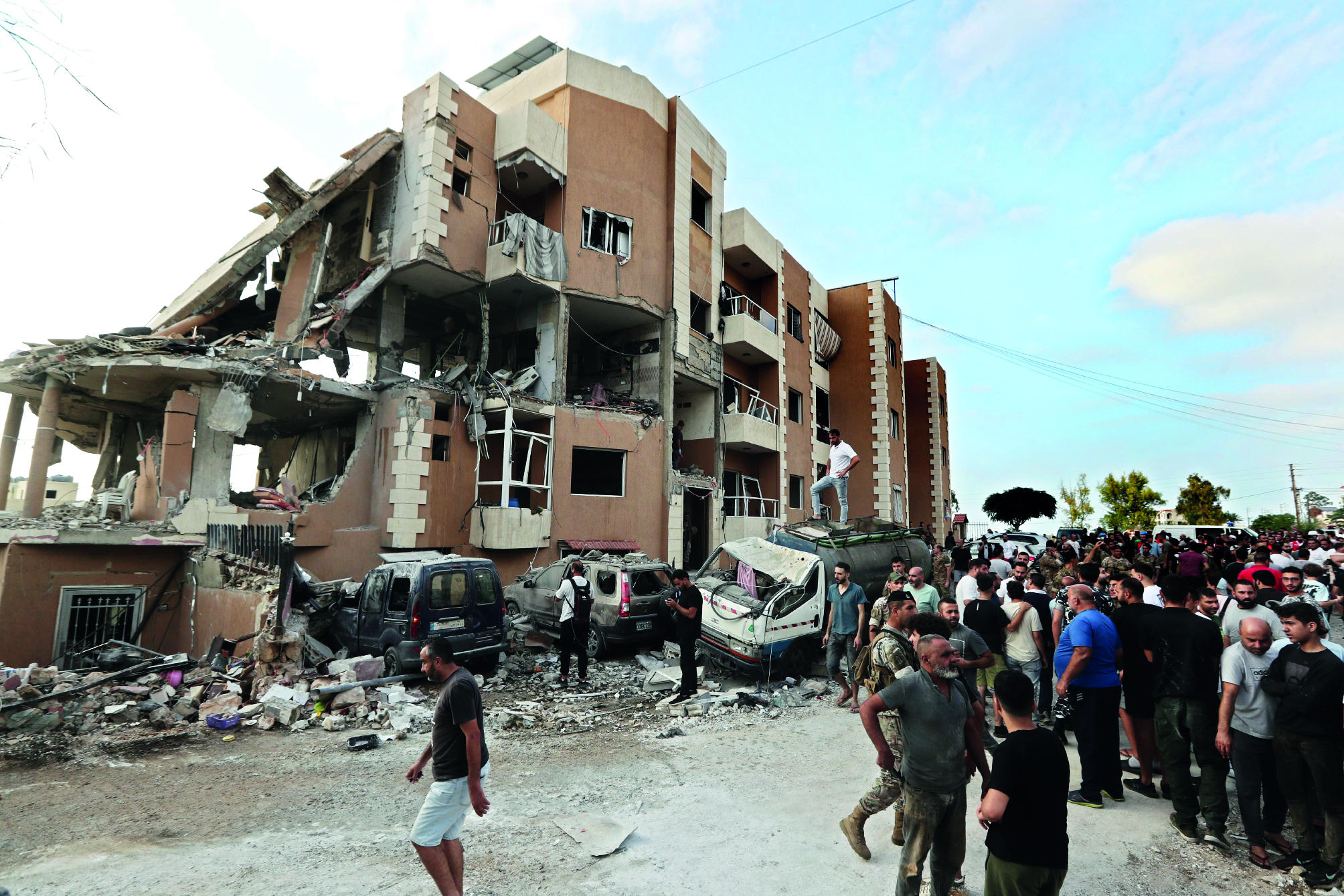Over 400,000 Children Displaced In Lebanon By War. How Much More Blood Will Be Spilled Before Action?
The week that just passed since the conflict between Israel and Hezbollah began has resulted in a catastrophic humanitarian crisis in Lebanon. Over 400,000 children have been displaced in just three weeks, and not one seems to have a sure shelter for their family.

UNICEF, the United Nations Children’s Fund, sounded alarms over the critical consequences of this displacement. A “lost generation” lies in the fear that is evaporating access to education in the background of conflict. “1.2 million children are now without schooling. This is the reality of the situation we are dealing with,” said Ted Chaiban, UNICEF’s Deputy Executive Director for Humanitarian Action.
It is in this regard that the current analysis will delve deeper into the multi-level impact of the war on children, families, and the local civilians in the area, then further expand the broader implications of the tensions between these geopolitical players.
I don’t want to be a lost generation,” said Dalia, an 11-year-old student who attended the school in Mousaitbeh. Mass dislocation war between Israel and Hezbollah has resulted in a humanitarian crisis of massive proportions in Lebanon, where more than 400,000 children have been displaced within just three weeks, according to the United Nations (UN).
According to the United Nations’ children’s agency, UNICEF, serious concerns have been raised regarding the destiny of these displaced children and their access to education, warning that there may be a “lost generation.”.
This conflict, which began as a clash between Israeli forces and Hezbollah, has rapidly escalated and is impacting the civilian population of Lebanon very seriously. Beyond the field of battle, every aspect of life is being touched by ordinary people, including children. Homes are destroyed, schools are broken, and basic services in healthcare and water are interfered with.
The War- Background and Geopolitical Roots

The conflict between Israel and Hezbollah is no new news to anybody. Hezbollah is a powerful militant and political organization based in Lebanon. It has always been in a tense and hostile relationship with Israel since decades. The origin of this tension dates back to the Israeli occupation of southern Lebanon, which ended in 2000.
A resistance group against Israel’s occupation of Lebanon, Hezbollah has been forming since the 1980s and looks upon itself as the protector of Lebanon from Israeli aggression. On the other hand, Israel sees Hezbollah as a terrorist group with an Iranian support and influence that is threatening to Israel’s security.
The past years saw a full-scale war break between Hezbollah and Israel in 2006. It lasted for 34 days and left the landscape of southern Lebanon as well as much damage throughout it. Since then, the group has been involved in minor skirmishes, rocket exchanges, and some limited military operations with Israel. The latest violence that broke out in September 2024 marks, however, the most crucial escalation in nearly two decades.
The fighting has been largely limited to the Israel-Lebanon border but has spilled over into eastern Lebanon, reaching into urban areas such as Beirut and northern sections. Israeli air strikes have attacked Hezbollah strongholds, while Hezbollah has launched rockets and missiles across the Israeli border. The war is not only characterized by direct military confrontations but also by many civilian casualties, displacement, and infrastructure destruction.
Humanitarian Impact- More Than 400,000 Children Forced to Flee
Lebanon has paid a bitter human cost. According to UNICEF, over 1.2 million people have been displaced by the war. These include more than 400,000 children, chased from homes in desperation to find safety. Large families have fled for refuge both in the capital, Beirut, and up north in Lebanon. However, internal displacement reveals a whole set of other problems, more specifically, in terms of food, shelter, and health.
The war has brought the already fragile education system of Lebanon to the near brink of collapse. According to Ted Chaiban of UNICEF, more than 1.2 million children cannot attend school nowadays. Fierce fighting destroyed public schools, rendered them inaccessible, or even used these structures as shelter for internally displaced families.
This means that a large percentage of Lebanon’s children is being denied school attendance, thereby losing out on much-needed education. Without learning, children are at risk of becoming part of a “lost generation” , one that grows up without the skills and knowledge to create the future for themselves and their country.
A few private schools are still operating, but many families-oftimes, refugees and internally displaced groups cannot afford such schools.
The Lebanese education system was even worse before the war: teaching staff in schools went on strike for better pay and conditions of delivery services, and the schools were, in general, lacking in their resources. The situation has worsened under war, plunging children into uncertainty and fear.
Conditions in Refugee Shelters

The conditions in which the displaced families are living are dire. Many families are overcrowded in shelters meant to house much fewer people, while others are in public schools where classrooms are being divided by plastic sheets to provide minimum privacy to the families. In some shelters, 1,000 people share just 12 toilets of which many are out of operation. It has an implication of overcrowding which raises hygienic and disease proliferating features.
In some cases, families resorted to sleeping by the highways and public beaches because there is no more space left in the tents that have been officially set up. These shanties give the family scant protection from the elements- they are indeed subjected to cold rains.
Lack of proper sanitation and clean water further worsens living conditions
Already on its knees, Lebanon’s healthcare system has suffered an additional serious blow: over 100 of its primary healthcare centres have been forced to close due to damage from the fighting or for lack of resources, and 12 hospitals are partially or fully out of service.
Destruction of water infrastructure has also been a significant problem. Says UNICEF, 26 water stations, supplying clean water to some 350,000 people, have been damaged by airstrikes or other fighting. This made large portions of the population access unclean drinking water. The cuts in those key services further distressed the living conditions of the displaced families, increasing the risk of waterborne diseases.
Psychological Impact on Children
The war has also brought much psychological impact on children. It has subjected children to unforeseen psychological impositions, primarily through the violence that they have witnessed firsthand. The acts that children have witnessed or have undergone have left many traumatized. Many have been living in fear and anxiety as they are constantly exposed to the sounds of shelling, gunfire, and airstrikes. As UNICEF reports, most of the children in displaced settings flinch at any loud noise, relating it to violence.
Moreover, children who stay in shelters or shanty camps cannot cope with the loss of their homes, schools, and even friends. They are growing up in a world that is not guaranteed to be safe and, more so, where the future is still unclear. As a matter of fact, the compensation of lost education and the trauma brought about by the war has already affected the generations of children.
Geopolitical Power Struggles
At the heart of the conflict is a complex geopolitics of power struggles. Hezbollah has support from Iran, which views the group as a key player in its broader strategy to project power in the region. The influence of Iran in Lebanon through support to Hezbollah has long been a source of tension between Tehran and Israel. Israel seems to view Hezbollah as the proxy for Iranian power in the region and always views Hezbollah’s military capabilities as a direct threat.
The war between Israel and Hezbollah has already attracted other regional players into the fight, including the United States, which traditionally favours Israel. The U.S. has also provided military aid to Israel and condemned Hezbollah’s actions and called on them to be disarmed. Even other countries in the region, such as Syria, whose relationship with Hezbollah is somewhat complicated, are keenly watching this conflict since it has broader regional implications.
Adding to the crisis in Lebanon is the reality of Palestinian refugee camps, many of whom are accommodated in camps now under siege. Already dire situations in these camps have deteriorated as tensions continue.
Call for Immediate Cessation and International Intervention
With this humanitarian crisis going out of hand, the pressure to say stop and call for a ceasefire heightens. Humanitarian leaders like Ted Chaiban asked that the parties end violence and advance a diplomatic approach that may shape lasting peace.
Greater protection for civilians, especially children, Chaiban demands, and the international community must take a step forward to support humanitarian efforts in Lebanon. However, this call remains mute as the international response has been very limited in areas such that many aid agencies face difficulties raising much-needed funds to deliver such assistance to those in need.
UNICEF sought a whopping $108 million to mobilize emergency aid for the displaced children and their families. The appeal brought in only a tiny fraction of what it needs, so agencies operating in the area could not even provide the most basic of services-most were refused access to clean water, shelter, and medical care-in this devastated war-torn region.
The Future of Lebanon. A Lost Generation?

The longer the war lasts, the more dismal the Lebanon case would seem. As of now, the economic crisis is already quite serious within this country, with high unemployment, inflation, and a falling currency. Fighting with Israel has worsened all these problems, along with its attendant rigours of destroying infrastructure that set this country back years.
The future for the kids in Lebanon is even more ominous. In a country where schools are shut and where learning is undergoing disruption, many children miss school education. Without education for some kids, their future may well be one in which they grow up ill-equipped to build a future for themselves or their country.
In addition, the psychological implications of the war on children will last for decades to come. Many traumatized children with trauma problems will face long-lasting challenges unless they are brought support that will help in conquering them. An immediate action should be taken.
In this case, the Israel-Hezbollah confrontation has left a humanitarian catastrophe. Over 400,000 children are displaced and millions more have been affected by the war in Lebanon. War does not destroy homes, schools, and infrastructures but leaves these families to fight for survival in overcrowded shelters and makeshift camps.
The international community must now act to address this crisis, providing funding for humanitarian activities, demanding a ceasefire, and supporting diplomacy that will lead to a permanent peace. A whole generation of Lebanon’s children will be lost unless urgent action is taken to educate, support, and provide opportunities for building their lives.
In stark terms, what the war represents is the human cost of gaining geopolitical power, as these battles most adversely affect ordinary people, and it is they who ultimately suffer from violence, while their future is determined by its balance.




